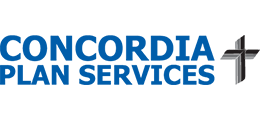What is Heroin Abuse
Understanding Heroin Abuse
Heroin is the most highly abused illicit drug of the opiates. It is synthesized from morphine, a natural derivative of certain poppy plants. On the street, heroin may be referred to as “smack,” “H,” “skag,” and “junk.” Alternate names may refer to types of heroin that are produced in a specific location, such as “Mexican black tar.” Heroin is used by snorting, smoking, or injecting it directly into the veins or muscle.
Heroin is often cut with other inert ingredients such as quinine, sugar, and powdered milk. In rare cases, it is cut with poisons such as strychnine or battery acid. This means you are never completely sure of the purity of the heroin you are using, which increases the likelihood of overdose. Those who inject the heroin run the risk of infection by blood borne pathogens such as HIV/AIDS and hepatitis when needles are shared.
Substances that have a high potential for abuse activate the pleasure center of the brain. Our brains are wired so that when we engaged in behaviors that help us survive, like eating and drinking, natural opioids are released and stimulate the pleasure and reward centers of the brain. Heroin stimulates these opioid receptors and causes pleasurable sensations. With chronic use, heroin signals the body to stop producing the naturally-occurring opiates. This can lead to increased distress when cutting down or quitting heroin.If you have unsuccessfully attempted to stop using heroin on your own, you may feel as you will never be able to kick the habit. The staff at North Tampa have treated many men and women addicted to heroin and we know that you have internal strengths and resources you can utilize to help you successfully beat your addiction. We are here for you and will provide continuous support as you begin your journey on the pathway to sobriety and the positive, hope-filled life you deserve.
Statistics
Statistics of Heroin Abuse
According to the 2003 National Survey on Drug Use and Health, the lifetime prevalence of heroin use was estimated at 3.7 million people, with around 315,000 using heroin in the past year and approximately 120,000 reporting heroin use in the past month. The highest prevalence rates were found in those over the age of 25. The modal age of new users was reported to be 18 years, of which 75% were male. Of those reporting past year use, it was found that almost 58% could be classified as experiencing heroin abuse or dependence. According to NIDA, lifetime heroin use among students in grades 8 through 12was estimated at 1.6%.
Causes
What are the Causes of Heroin Abuse
Genetic Factors: Drug abuse is passed down through the generations in families. Individuals with a first-degree relative with an opioid or specifically heroin abuse disorder are more likely to develop a similar abuse disorder.
Physical: Brain chemistry and structures play a role in this type of addiction. With chronic use, heroin mimics the naturally occurring opiates in the brain, which produces sensations of pleasure. As tolerance builds up, an individual will need more of the drug in order to obtain desired effects. Additionally, attempts to cut down or quit using heroin will result in withdrawal symptoms. Addiction results due to an individual continuing to use heroin as a way of avoiding these negative withdrawal symptoms.
Environmental: When a child observes heroin use in the family, they will grow up thinking this behavior is permissible. If heroin use is modeled as a coping strategy, the child may develop the tendency to turn to heroin to cope with stress or other life difficulties as they grow older.
Risk Factors: Risk factors associated with heroin abuse include antisocial tendencies, being oppositional or rebellious and engaging in experimental behavior in adolescence, environmental stress, family difficulties, gang membership, living in the inner-city, poverty, excessive wealth, family history of substance abuse and drug addiction, and low self-worth.
Signs and Symptoms
Learn More About the Signs and Symptoms of Heroin Abuse
Behavioral Symptoms:
- Evading eye contact, or looking off into the distance
- Lying or otherwise deceiving people
- Deteriorating performance and productivity at school or work, possible expulsion or job loss
- Poor hygiene and taking less care with physical appearance
- Borrowing or taking money from friends or loved ones, or unexplained loss of valuables
- Hostility toward friends and family
- Neglecting responsibilities in major life areas
- Using heroin in dangerous situations or increase in risk-taking when using, such as driving excessively fast or having unprotected sex
- Increased arguments and fights with significant others
- Taking other drugs to prevent or get rid of withdrawal symptoms
- Taking more of the drug or taking it over a longer period of time than intended
- Much time spent obtaining, taking, or recovering from the use of the drug
- Continued use of drug despite awareness that it is causing psychological and physical problems
- Frequent involvement in fights or illegal activities
- Secretive or suspicious behaviors often due to paranoia
- Social withdrawal
- Joining a new peer group
Physical symptoms:
- Significant increase in time spent sleeping
- Tolerance
- Withdrawal
- Weight loss
- Runny nose in the absence of other illness
- Infections or sores at injection site
- For women, lack of menstrual cycle
- Cuts, contusions, or scabs from picking at skin
- Altered appetite or sleep patterns
- Tremors, slurred speech, or impaired coordination
Cognitive symptoms:
- Loss of interest in previously enjoyed hobbies and activities
- Unclear, confused, or disjointed thoughts and speech
- Lack of motivation toward any goal related activity
- Apathy related to future goals
Psychosocial symptoms:
- Decrease in self-esteem
- Depression
- Anxiety
- Mood swings
- Agitation
- Irritability
Effects
Understanding the Effects of Heroin Abuse
- Legal problems
- Hypotension or hypertension
- Shallow respiration
- Decreased appetite
- Decreased swallow response
- Impeded circulation
- Sleep apnea
- Pain and swelling in the joints
- Frequent irritability or anger outbursts with no known trigger
- Development of mood disorders
- Development of anxiety disorders
- Confused chaotic thoughts
- Impaired coordination
- Engaging in risky behavior
- Buying and dealing other drugs to be able to buy the preferred drug
- Suicidal ideation
- Death from long-term medical effects
Withdrawal and Overdose
Learn More About the Effects of Heroin Withdrawal and Overdose
Overdose- Symptoms of heroin overdose include:
- Depressed or lack of respiration
- Dry mouth
- Pupils appear like “pinpricks” or “pinpoints”
- Discolored tongue
- Extremely low blood pressure
- Slowed pulse
- Lips and nails appear blue
- Stomach spasms
- Delirium
- Disoriented to time, place, and person
- Excessive sleepiness
- Muscle spasms
- Coma
- Death
Withdrawal: Symptoms of heroin withdrawal include:
- Nausea
- Restlessness
- Insomnia
- Depression
- Sweating
- Shaking
- Anxiety
Co-Occurring Disorders
Heroin Addiction and Co-Occurring Disorders
Disorders that co-occur with heroin use include:
- Alcohol and other substance abuse
- Major depressive disorder
- Post-traumatic stress disorder
- Antisocial personality disorder
- Intermittent explosive disorder
- History of conduct disorder in childhood











